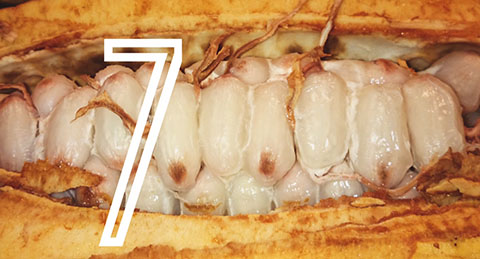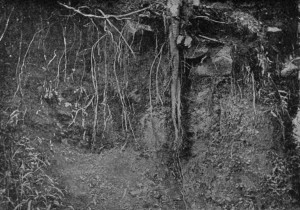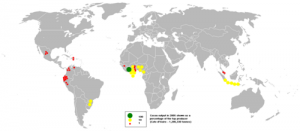Integrative Question: Using a permaculture design lens, outline an ideal cacao production and distribution system that integrates all disciplinary learning to satisfy the ethics of earth care, people care and fair share.
Cacao trees are delicate and sensitive to changes in weather, therefore need to have a decent canopy to shade it from direct sunlight. This canopy could be of use itself too. Native, profitable tall plants that grow in the same climate as cacao could also include: Fruit trees, (up to 50 different fruits can grow harmoniously alongside cacao!) rubber trees, different kinds of timber and fibers, all while providing a better habitat for wildlife.
This shaded approach at cultivating cacao also provides the perfect environment for the very thing that pollinates these plants, midges! And is also home to many cacao pest-eating creatures as well. This natural approach at cacao farming ensures natural systems stay in play, ultimately keeping the soil fertile without having to use various kinds of pesticides and fertilizers.
Cacao can only grow within 8 degrees of the equator which is problematic when you think of how high of a demand there is for cacao. This has resulted in the fashion of plantations mono cropping cacao, wiping out everything else. This is system made strictly for profit with nothing ethical or sustainable about it. Mono-cropping is especially nonsensical for cacao trees because they very fragile plants that are easily susceptible to disease. One diseased plant could ruin an entire plantation that is completely exposed to the next tree.
Cacao pods do not ripen in one yield, they actually regularly produce pods all year long. This means that cacao trees need lots of attention, regular harvesting and pruning as well as the weeding and thinning of the canopy.
-Direct trade / fair trade Fair Trade doesn’t help the poorest of farmers and barley helps the mildly successful.
“After examining 13 years of data from cooperatives in Guatemala is that, on average, the economic benefits of participating in the fair-trade system are offset by the price the growers have to pay for fair-trade certification. In other words, they found that the long-term benefit over time from fair trade to be essentially zero.”
Direct Trade seems more ethical, and more likely to actually trade fairly, because it is up to you. This allows you truly pay your farmer’s fairly which means even more if they have an exceptional product. This ensures the health and well being of those working on health and well being of the cacao trees!


